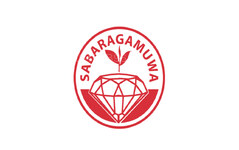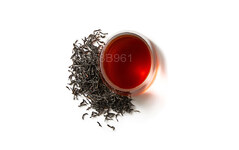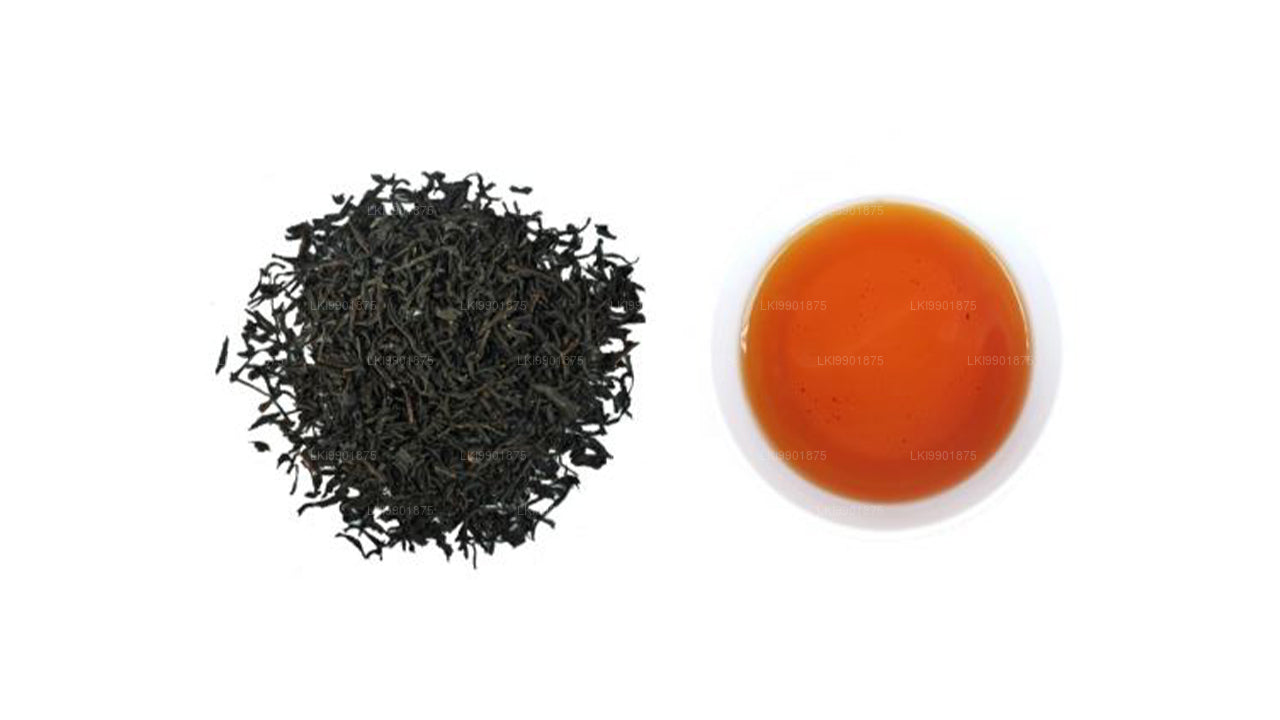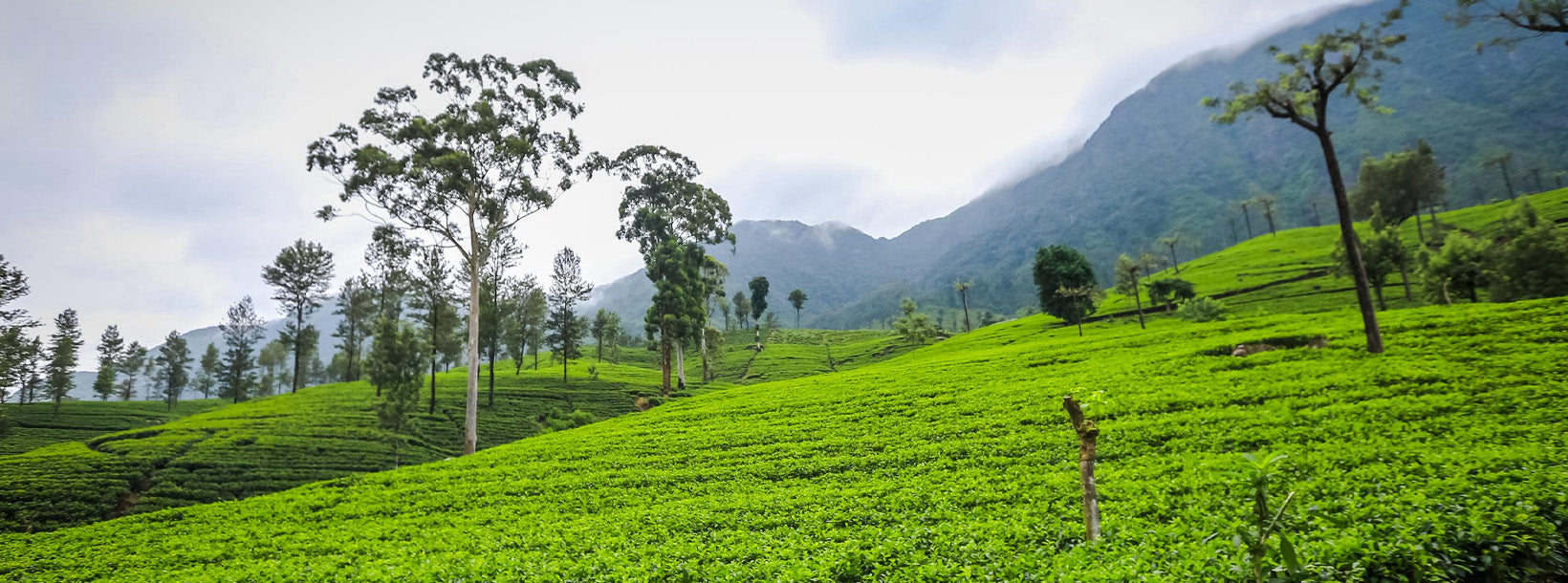
Teplantager
Sri Lankas teplantager, primært beliggende i det centrale højland, er kendt for at producere noget af verdens fineste te. Disse frodige plantager, såsom dem i Kandy, Nuwara Eliya og Hatton, byder på naturskønne landskaber og en rig historie. Plantagerne bidrager betydeligt til landets økonomi og eksporterer Ceylon-te af høj kvalitet til hele verden.
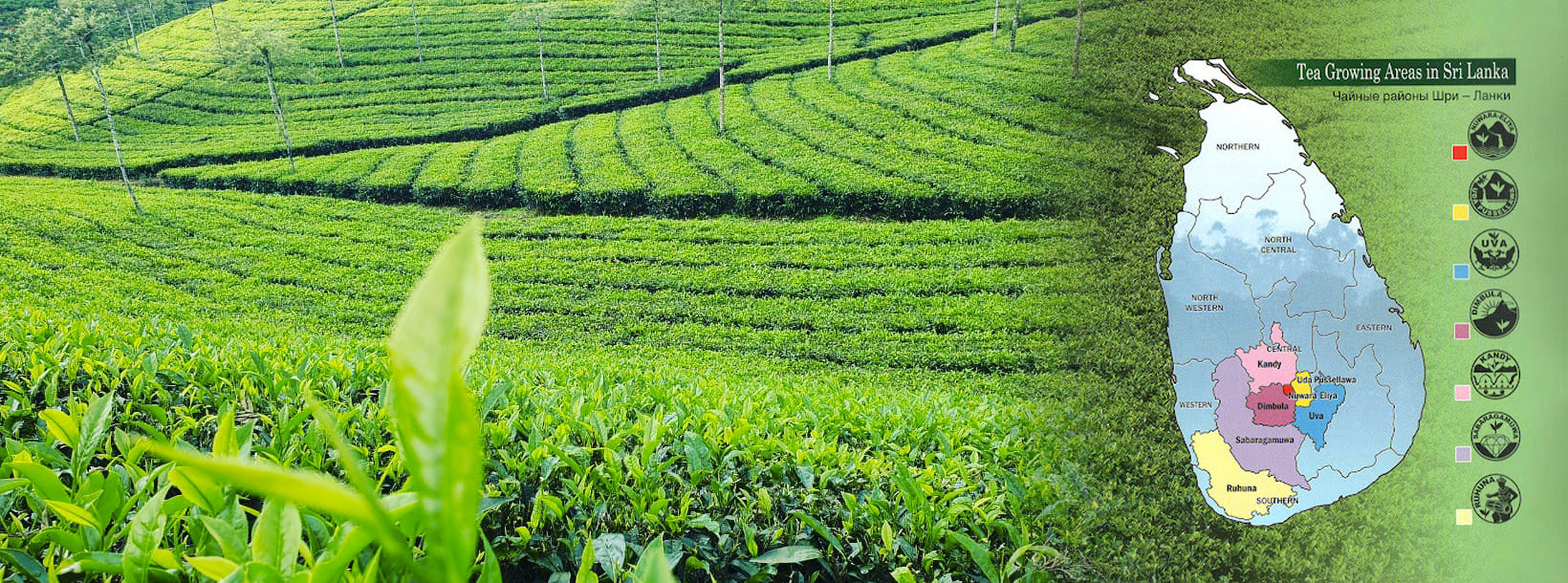
Ceylon teregioner
Bryggen i din kop har en historie at fortælle. Den handler om bølgende bakker, rigeligt solskin og frodige provinser. I Sri Lanka producerer de centrale og sydlige provinser det meste af teen. Varierende højder og mikroklimaer påvirker den karakteristiske smag, farve, aroma og sæsonbestemthed af Ceylon-te.
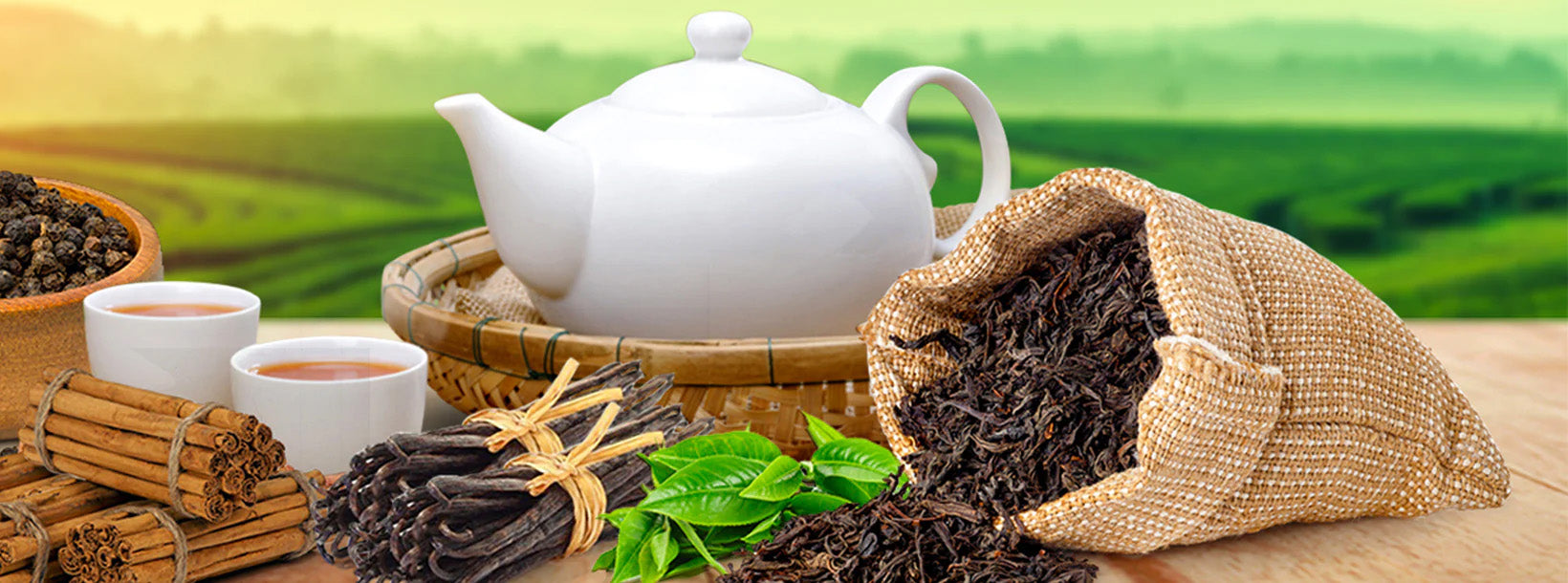
Ceylon sort te kvaliteter
Ceylon-te, som vi kender det nu, findes i forskellige varianter, som har unikke smags- og aromatyper. Udover de mange forskellige teer findes der også forskellige kvaliteter, som Ceylon-te er blevet opdelt i.
Sabaragamuwa Tea
Sabaragamuwa is one of the biggest tea-growing regions in Sri Lanka. This growing region covers the western and southwestern and central mountains of the country.
The teas of Sabaragamuwa, in other words, Ruhuna, are mainly low-grown. all the estates range in elevation from sea level to around 2,500 feet.
The highest estates lie just below the boundaries of the Sinharaja and Peak Wilderness nature reserves. the environment consists of rainforests, cloud forests, and high grassy plains in this region.
As a result, they produce tea of a somewhat different character to that grown at lower elevations in the district. And also, some of these estates receive the highest rainfall of any in the plantation districts.
Other upper Sabaragamuwa estates receive some weather from the nearby Uva climatic system. Therefore, they produce in an entirely different way.
Sabaragamuwa produces a fast-growing bush with a long leaf, very black when withered, and well suited for ‘rolling’ (see manufacturer). The liquor, too, is similar to that of Ruhuna tea, dark yellow-brown with a reddish tint in the dry season, though lightening somewhat with altitude.
However, the ‘nose’ or aroma, is noticeably different from the Ruhuna product, with a hint of sweet caramel, and not quite as strong as the latter. The flavor, too, is strongly marked, especially with respect to low-grown examples.
These are general comments, However, and need not apply to all teas produced in Sabaragamuwa. The districts contain a number of sub-districts such as Ratnapura, Rakwana, Kaltura, Matara & Weligama close to the Southern coast.

